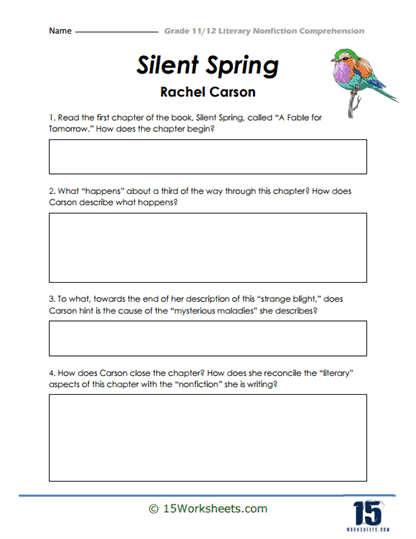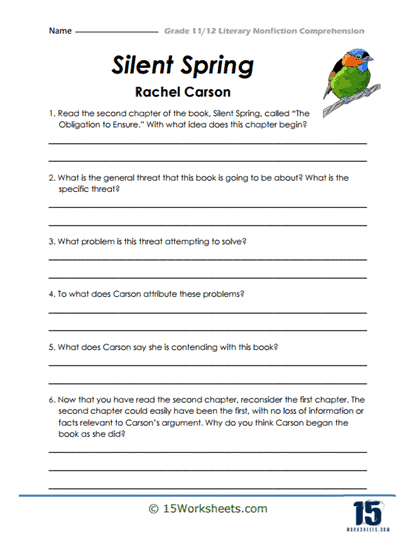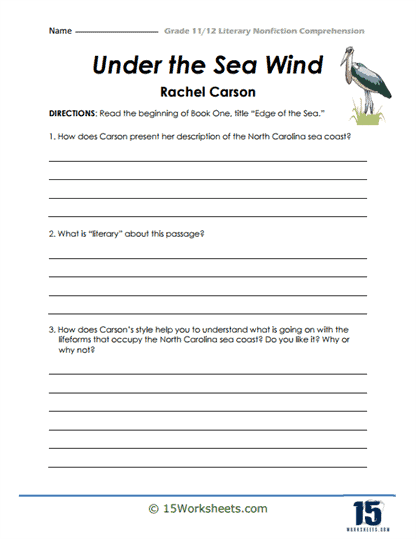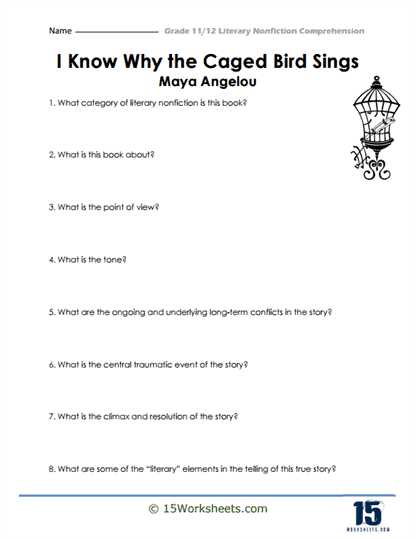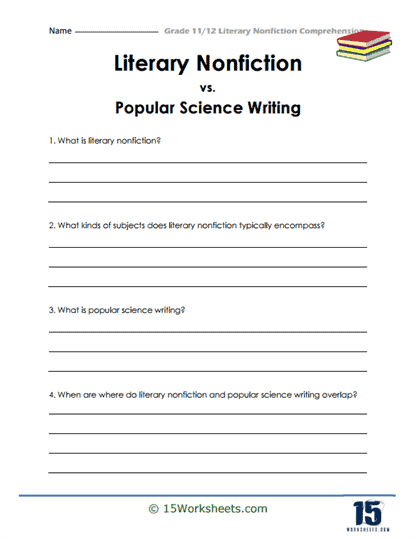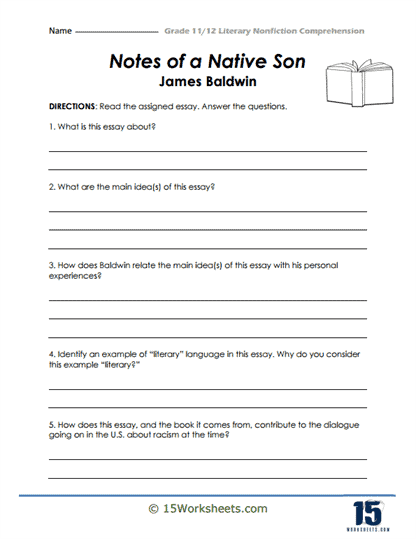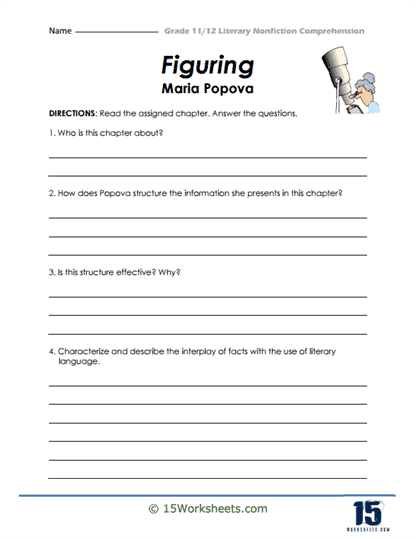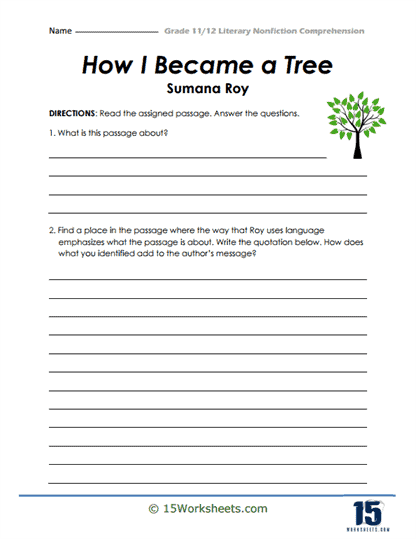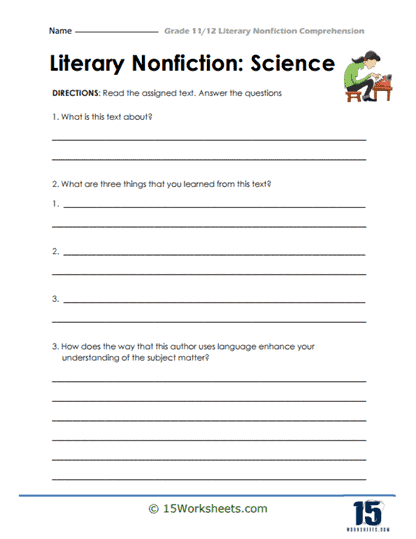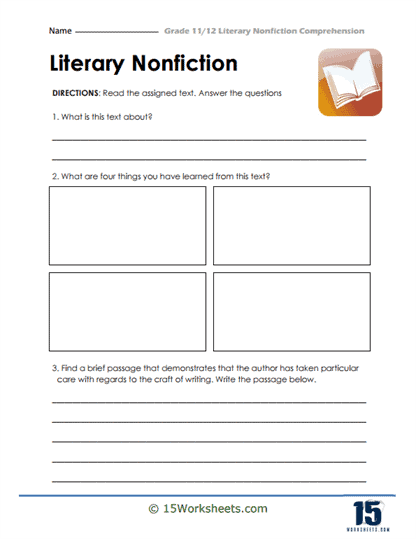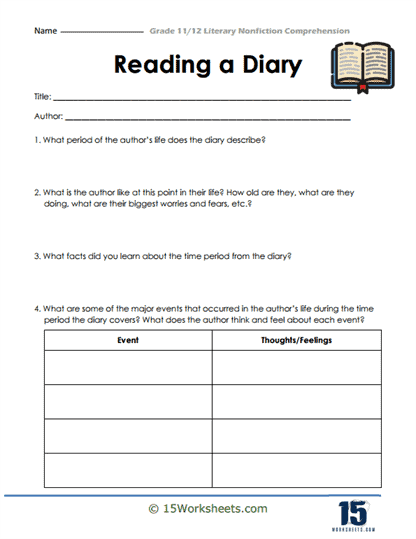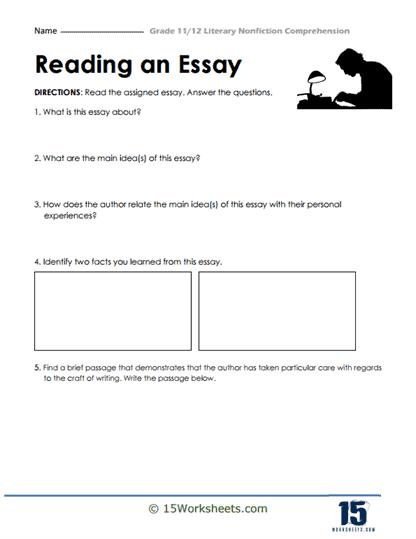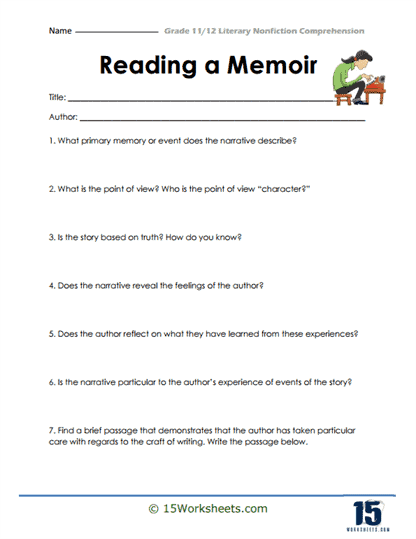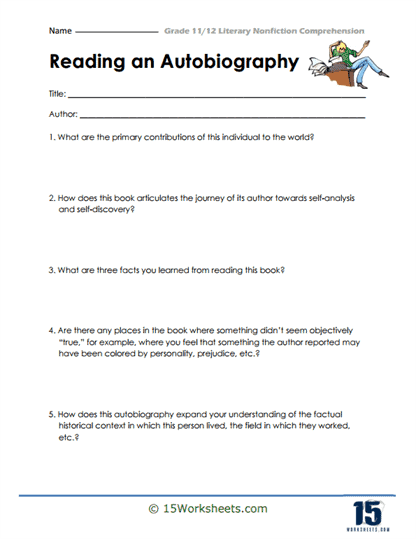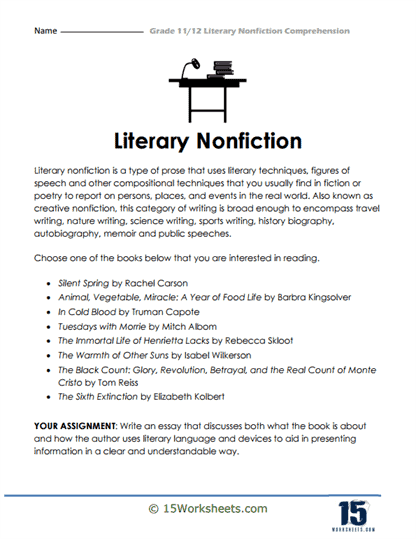High School Literary Nonfiction Comprehension Worksheets
All About These 15 Worksheets
Literary nonfiction, a captivating genre that blends the art of storytelling with factual information, offers a unique lens through which students can understand the world.
This genre includes memoirs, essays, biographies, and more, making it a rich source of knowledge and insight. The High School Literary Nonfiction Comprehension Worksheet collection is designed to help high school students master the art of comprehending and analyzing these thought-provoking texts. Here, we’ll explore the importance of literary nonfiction comprehension and its numerous benefits to students.
Understanding literary nonfiction is more than just a literacy skill; it’s a gateway to the world of ideas and experiences. Here’s why literary nonfiction comprehension is vital for high school students:
- Cultivating Critical Thinking: Literary nonfiction challenges students to think critically. It encourages them to analyze the author’s perspective, argumentation, and evidence, fostering skills that are valuable in academics and life.
- Empathy and Perspective: Many literary nonfiction pieces explore diverse experiences, cultures, and viewpoints. Engaging with these texts helps students develop empathy and a broader worldview, promoting tolerance and inclusivity.
- Enhancing Analytical Skills: Literary nonfiction often presents complex ideas and rhetorical strategies. Students who can dissect these texts gain a deeper understanding of persuasive techniques, rhetoric, and the power of language.
- Improved Writing Skills: Exposure to well-crafted literary nonfiction can inspire better writing. Students learn from expert writers and can apply these techniques to their own essays and reports.
- Career Readiness: In the professional world, the ability to comprehend and critically evaluate reports, research papers, and policy documents is a valuable skill. High school literary nonfiction comprehension prepares students for future academic and career success.
What is Literary Nonfiction?
Literary nonfiction, also known as creative nonfiction, is a type of prose that falls between traditional nonfiction and fiction. Instead of being fact-based like your history textbook or based entirely on your imagination like your favorite sci-fi book, literary nonfiction combines elements of both fiction and nonfiction to tell its story innovatively.
The term nonfiction may conjure up images of works like the Encyclopedia Britannica or other similar reference books. While it is true that nonfiction can refer to any book, essay, article, report, or other text that does not have the elements of fiction—such as characters and plots—it can also mean any writing that is not poetry or drama.
Literary nonfiction is nonfiction used to convey information about something in an engaging manner, with a subjective point of view rather than an objective one. In this article, we’ll discuss what literary nonfiction is and why you should consider reading it over other types of nonfiction books.
The Characteristics of Literary Nonfiction
Literary nonfiction is a writing genre that combines fiction and nonfiction elements.
Like fiction, it often tells a story, using characters and plot. However, the events and people in literary nonfiction are real, and the stories are based on actual events. Literary nonfiction often uses literary devices such as metaphor and simile to explore its subject matter.
In addition, literary nonfiction often contains elements of personal reflection and opinion.
As a result, it can be both informative and entertaining. Whether you’re reading an article about a current event or a memoir about someone’s life, literary nonfiction is an engaging way to learn about the world around you.
The Benefits of Reading Literary Nonfiction
In an age of 24-hour news cycles and social media, it can be easy to forget the value of slow, thoughtful reading. However, literary nonfiction offers a unique perspective on the world that is well worth exploring.
By its very nature, literary nonfiction is designed to be read slowly and reflectively. Unlike articles or blog posts, which are often written to quickly deliver information, literary nonfiction is more concerned with offering insights and provoking reflection.
In addition, literary nonfiction often provides a more intimate look at its subjects than other forms of writing. Rather than simply presenting facts and figures, literary nonfiction uses storytelling techniques to bring its subjects to life. As a result, readers can develop a deep understanding of the people and events they are reading about.
So the next time you’re looking for something to read, consider reaching for a work of literary nonfiction. You may be surprised by how much you enjoy it.
Some Famous Examples of Literary Nonfiction:
One of the earliest examples of literary nonfiction is The Odyssey, an epic poem by Homer that recounts the story of Odysseus and his ten-year journey home from the Trojan War. While The Odyssey is based on historical events, it also contains elements of mythology and legend, making it an important work of both history and fiction.
In the 18th century, another important work of literary nonfiction was published: The Life and Opinions of Tristram Shandy, Gentleman by Laurence Sterne. This novel uses a unique mix of humor, satire, and philosophy to explore the nature of human identity and experience.
In the 20th century, literary nonfiction reached new heights with works like James Joyce’s Ulysses and Virginia Woolf’s Mrs. Dalloway. These novels used innovative techniques to blur the lines between fact and fiction, resulting in some of the most important works of literature ever written.
Today, literary nonfiction remains an essential part of our literary heritage, with new works published daily.

